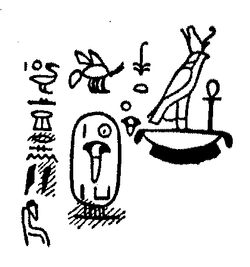Biography
Even though Segerseni adopted the titles of an Egyptian pharaoh, there is no evidence of him outside of Nubia. [3] He was thus most likely a pretender to the Egyptian or Nubian throne headquartered in Lower Nubia, during a politically troubled period: either at the beginning of the First Intermediate Period, [3] during the Second Intermediate Period, [5] or in the time span including the reign of Mentuhotep IV of the 11th Dynasty and the early reign of Amenemhat I of the 12th Dynasty. [1] [3] [6] The latter possibility is seen as more probable by Egyptologists. [3] In particular, these two rulers seem to have had problems in being universally recognized as legitimate pharaohs.
It is known that Amenemhat I dispatched Khnumhotep I, the faithful Great Chief of the Oryx nome (the 16th nome of Upper Egypt) at Elephantine to Nubia in order to wipe out the last resistance against him there, [7] but it is not known with certainty who was the leader of this resistance. It remains conjectural to posit that it was Segerseni. Furthermore, two other rulers based in Nubia, Iyibkhentre and Qakare Ini are known, likely from the same time period. They were both likely pretenders to the Egyptian throne, and the relationships between them and Segerseni are unknown. If Segerseni was indeed Amenemhat I's foe, he could have been fighting on Mentuhotep IV's side or for his own Nubian realm. Indeed, Nubia had gained its independence during the First Intermediate Period, as indicated by the military campaigns of Mentuhotep II in the region, only 40 years prior to Segerseni's conjectured lifetime. [8]
This page is based on this
Wikipedia article Text is available under the
CC BY-SA 4.0 license; additional terms may apply.
Images, videos and audio are available under their respective licenses.

